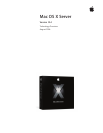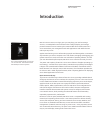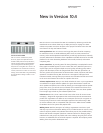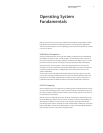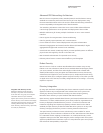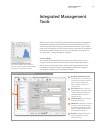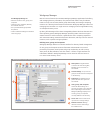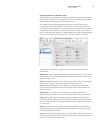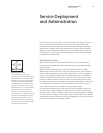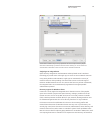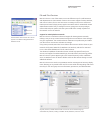8
Technology Overview
Mac OS X Server
Advanced BSD Networking Architecture
Mac OS X Server incorporates industry-standard protocols and the latest in security
standards to increase the performance and security of server deployments. Using
the time-tested BSD sockets and TCP/IP stack, this advanced networking architecture
ensures compatibility and integration with IP-based networks.
The networking architecture in Mac OS X Server v10.4 includes advanced features
critical to high-performance server operation and deployments. These include:
• Multilink multihoming for hosting multiple IP addresses on one or more network
interfaces
• IPv6 to support the next generation of Internet addressing
• IPSec for general-purpose protection of IP communications
• IP over FireWire for ad hoc network deployments and system administration
• Ethernet link aggregation and network interface failover (IEEE 802.3ad) for higher
aggregated throughput and increased server availability
• Virtual local area network (VLAN) tags that let you treat speci ed systems on di! erent
physical LANs as though they were all on the same LAN
• 802.1X network authentication for improved access security
• Ethernet jumbo frames to increase network e" ciency and throughput
Robust Security
Mac OS X Server is built on a robust UNIX foundation that contains many security
features in its core architecture. State-of-the-art, standards-based technologies protect
your server, network, and data. These technologies include a built-in rewall with
stateful packet analysis, strong encryption and authentication services, data security
architectures, and support for access control lists (ACLs). Simple interfaces and con g-
uration tools allow you to con gure systems easily and securely. In fact, when you take
an Apple server out of the box, it’s already con gured with secure settings—no security
expertise is required.
Directory Integration
By using open standards and publishing the schema extensions speci c to the Mac,
Apple has made it easy to integrate Mac OS X and Mac OS X Server systems into
virtually any directory-based network, including ones that use Open Directory,
Microsoft’s Active Directory, or open standard LDAP-based solutions.
1
Open Directory, Apple’s standards-based directory and network authentication services
architecture, is a robust, scalable directory server that’s perfect for organizations that
haven’t yet deployed centralized directory services—as well as for businesses and
institutions migrating from expensive proprietary solutions. Based on the LDAPv3
standard, the Open Directory architecture allows Mac OS X systems to use any LDAP
directory, leveraging the directory services in existing network infrastructures.
The Open Directory architecture comes with directory access modules for various
popular directory services solutions. It adheres to the RFC 2307 schema and also allows
for customized schema mappings. So attributes in an LDAP-based directory can be
mapped to settings on the Mac, eliminating the need to con gure each client system.
Apple has published these extensions as part of a comprehensive open source project
that includes all interoperability components.
Integration with directory services
Workgroup Manager works with Open
Directory or any other LDAP solution to
access and store user, group, and computer
information. Based on open standards,
Apple’s Open Directory architecture features
built-in directory access modules that simplify
integration with third-party directory services,
including IBM Directory Server, Microsoft
Active Directory, Novell eDirectory, OpenLDAP,
Sun ONE, NIS, and NetInfo.



